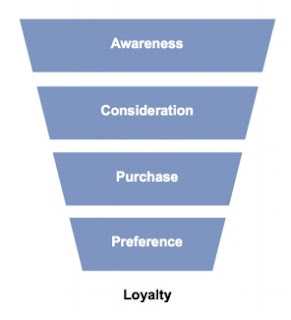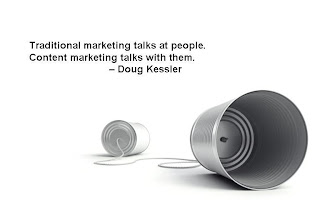Wouldn't it be cool if you could use Photoshop to create a faux group shot of the all the doctors in your practice? A wave of the Photoshop wand and shazaam a classic photo with arms folded and stethoscopes on. Weekly Probe thought so. They wrote about the "DrClonetastic" Photoshop filter and all its bells and whistles. Unfortunately, Weekly Probe is in the business of spoof news.
Until the magic wand filter is invented you'll have to get photos the old fashioned way. Set a day and time for your staff to pose. Make sure you give them advanced notice, they will want get their haircut, nails done, may be even a quick stop at the tanning salon. For continuity you may want to color coordinate the scrubs! You can use the winning image as your Facebook cover or even on your own doctor blog.
Make the most out of the shoot:
Tell the photographer exactly what you want: employee headshots, building interior/exteriors shots, close-ups of cutting edge equipment, patient photographs (click here for suggestions).
Your photos can be used throughout the social media world; Facebook, Pinterest, Twitter, on your website and blog. And they can be used to increase SEO (search engine optimization) so be sure to check with a social media consultant about the potential impact. Competition for keywords in the image market is much lower than in the text content market. But, that won't last long so stake your claim now!
Monday, January 28, 2013
Monday, January 21, 2013
The Top Doctors on Twitter
 |
| Photo Credit: Media Bistro |
TwitterDoctors.net is a quick and easy way to check doctor rankings. Measured by followers and tweets the high profile names like Dr. Oz are hardly surprising. However, the majority of successful social media physicians are "normal" docs with active and interesting accounts.
The content they generate is varied, from no nonsense advice to tweets about pop-culture and personal hobbies. Take time to review their content and decide what kind of social media presence you want to maintain.
If you would like to be included in the TwitterDoctors directory, click on the green button and follow the prompts.
With the right strategy your name could end up in the top spot!
Healthcare Marketing: Doctors versus Hospitals
 |
| Photo Credit: blog.cureus.com |
Do a search for medical themed blogs. The highest rankings do not belong to deep pocket hospitals or medical universities. They belong to doctors with a progressive approach to social media. Take a look at what KevinMD and Dr Grumpy in the House are up to.
Social media and content marketing have made promotion a light and nimble endeavor. The ability to update often and provide an evolving presence is far more important than expensive mailers and glossy magazine ads.
Hospitals are often weighed down by multiple departments and multiple decision makers. Doctors don't have these bureaucratic hurdles. With research and commitment private practice doctors have the ability to stay one, two, three steps ahead of hospitals and their enviable budgets.
Tuesday, January 15, 2013
The Age of the Digital Doctor
 |
| Photo Credit: online.wsj.com |
The push for electronic medical records certainly has something to do with it, but it’s more than that. Doctors are embracing the world of social media with an eye toward their patients. In a September 26, 2011 article, the American Medical Association’s amednews.com reported that the vast majority of US doctors are now on social media. The article cites a study by research and consulting firm Frost & Sullivan conducted between April and May, 2011, which found that 84% of doctors use social media for personal purposes.
CLICK HERE to read the full article at SocialMediaToday.com.
Facebook Study Hints at a Realigned Path to Purchasing
Social media is reorganizing the traditional purchase funnel.
Facebook recently teamed up with Forrester Research to conduct a study of the marketing/media usage of 101 C-level and VP–level marketing professionals. The study (not surprisingly) shows a changing environment. To quote Facebook and Forrester, “The connected world has rerouted the customer journey."
The traditional purchase funnel reflects the behavior of customers in the TV and radio age.
In the TV and radio age people became familiar with a brand and considered purchasing that brand. If they bought it and decided they liked it they came back for more. And eventually over time they became loyal to the brand. “I’m a Ford man.” “I only buy Clorox.”
Facebook and Forrester are proposing a modern standard, one that includes the changes brought on by social media. Theirs looks more like a circle:
CLICK HERE to read the entire article on Mashable.com
Facebook recently teamed up with Forrester Research to conduct a study of the marketing/media usage of 101 C-level and VP–level marketing professionals. The study (not surprisingly) shows a changing environment. To quote Facebook and Forrester, “The connected world has rerouted the customer journey."
The traditional purchase funnel reflects the behavior of customers in the TV and radio age.
In the TV and radio age people became familiar with a brand and considered purchasing that brand. If they bought it and decided they liked it they came back for more. And eventually over time they became loyal to the brand. “I’m a Ford man.” “I only buy Clorox.”
Facebook and Forrester are proposing a modern standard, one that includes the changes brought on by social media. Theirs looks more like a circle:
CLICK HERE to read the entire article on Mashable.com
Monday, January 14, 2013
Content Marketing: Number One With a Bullet
Content marketing is king. It far surpasses search engine marketing, public relations, print, television and radio advertising as the go-to marketing tool for today’s business-to-business entrepreneur.
A recent survey conducted by HiveFire, a Cambridge, Massachusetts based internet marketing solutions company, surveyed nearly 400 marketing professionals about the state of the business-to-business market and learned that marketers are backing away from traditional channels and are instead concentrating on increased and improved content. In fact, according to HiveFire’s B2B Marketing Trends Survey Report, twice as many marketers employ content marketing than do print, TV and radio.
And what is content marketing?
Simply put it is original content including, white papers, blog posts, case studies, videos and photos created for the purpose of generating leads. And more importantly leads that have shown a clear interest in a specific field. The HiveFire study found that 82 percent of B2B marketers employ content marketing into their strategy far outpacing search engine marketing at 70 percent, events at 68 percent, public relations at 64 percent and print/TV/radio advertising at 32 percent.
Seventy-eight percent of respondents said that driving sales and leads was the top marketing goal of their organization, followed by boosting brand awareness and establishing or maintaining thought leadership (both at 35 percent). Another 28 percent said their primary goal was to increase web traffic and 24 percent said it was to improve search results.
Cost efficiency is also a driving force behind content marketing. Nearly half of the content marketers interviewed said they allot less than a third of their budgets to these important marketing expenditures. In addition B2B marketers believe that the majority of their customers and prospects are online, thus they want to engage with them in the most meaningful way possible.
CLICK HERE to read the entire article at Entrepreneur.com.
Saturday, January 5, 2013
Doctors Using Social Media -- A Growing Number
Orthopedic
surgeon Thomas Lee actively tweets, checks in on FourSquare and builds his
GooglePlus network. His business cards have a direct link to his Facebook page.
His social media activity is exclusively for his patients. Lee, who practices
at the Orthopedic Foot and Ankle Center in Westerville, Ohio says, “It’s an
electronic way of extending the conversation. It creates a vibrant sense of
community and a wonderful back-and-forth dialogue.”
Much of the attention on social media in healthcare circles has focused on hospitals, which are often backed by well funded marketing efforts. However, primary care and other private-practice doctors are building an online presence as well. Not every personal physician maintains a presence on Facebook and Twitter, but we may not be far from the days when they do. TwitterDoctors.net, a database of physicians who tweet already has more than 1,300 registered doctors. “These are powerful, tremendously influential tools,” says internist Kevin Pho of Nashua, N.H., a popular medical blogger who engages with his patients via Facebook and Twitter. “Doctors should be taking advantage of the opportunity.”
A recent survey by the National Research Corporation, a healthcare research firm based in Lincoln, Nebraska showed that 20 percent of patients are currently using social media to gather healthcare information. Not surprisingly Facebook tops the list, followed by YouTube, Twitter, MySpace and FourSquare. Currently patients have to sift through a glut of user generated information, which isn’t always accurate. But as more and more physicians keep an active social media presence the reliability of information will grow by leaps and bounds.
Pho, for example, shares interesting findings and updated medical guidelines on his social media accounts. His professional Facebook page is public and he maintains a separate private account for family and friends. Recent links he’s posted for his audience range from “how to ask for help when chronic pain or illness strikes” to “the fallacies of screening tests.” CLICK HERE to read the entire article at USNews.com.
Much of the attention on social media in healthcare circles has focused on hospitals, which are often backed by well funded marketing efforts. However, primary care and other private-practice doctors are building an online presence as well. Not every personal physician maintains a presence on Facebook and Twitter, but we may not be far from the days when they do. TwitterDoctors.net, a database of physicians who tweet already has more than 1,300 registered doctors. “These are powerful, tremendously influential tools,” says internist Kevin Pho of Nashua, N.H., a popular medical blogger who engages with his patients via Facebook and Twitter. “Doctors should be taking advantage of the opportunity.”
A recent survey by the National Research Corporation, a healthcare research firm based in Lincoln, Nebraska showed that 20 percent of patients are currently using social media to gather healthcare information. Not surprisingly Facebook tops the list, followed by YouTube, Twitter, MySpace and FourSquare. Currently patients have to sift through a glut of user generated information, which isn’t always accurate. But as more and more physicians keep an active social media presence the reliability of information will grow by leaps and bounds.
Pho, for example, shares interesting findings and updated medical guidelines on his social media accounts. His professional Facebook page is public and he maintains a separate private account for family and friends. Recent links he’s posted for his audience range from “how to ask for help when chronic pain or illness strikes” to “the fallacies of screening tests.” CLICK HERE to read the entire article at USNews.com.
Subscribe to:
Posts (Atom)


